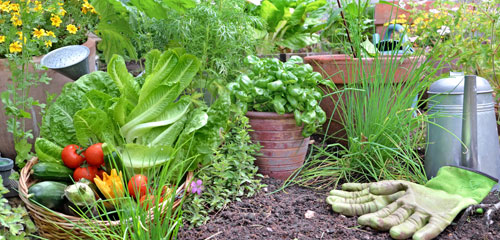Sun blocks are there to protect you from the harmful effects of the sun – but they may also prevent you making vitamin D from the same UVB rays. How can you get the best of both worlds?
Vitamin D is essential for everything from your immune system to blood sugar balance. You need it for your heart, your brain, your bones, and your reproductive health. Notably, vitamin D’s functions also include cancer prevention and skin health, so to miss out on making vitamin D because you’re wearing sun protection seems a little ironic.
As 1 in 6 adults in the UK are very low in vitamin D – and many more have less than optimal levels – should you be ditching the suntan lotion? Don’t worry, we’ve done the research, and here’s how you can stay safe in the sun, and still get your vitamin D.
Spend a short time in the sun with no protection
One study worked this out to be about 9 minutes a day at high noon in the south of the UK, or 13 minutes in Scotland, and longer for those with dark skin.
This is with at least a third of your skin exposed to the sun (e.g. wearing shorts and a T-shirt), so you’ll need longer if it’s just your hands and face.
It’s important to get what you can without burning, so if you need to spend a shorter time in the sun, consider exposing more skin during that time.
Make sure the sun is high enough in the sky
The sun’s UVB rays convert a substance in your skin to vitamin D. This is then converted to another form of vitamin D in your liver, and then to another one in your kidneys. You only get enough of these UVB rays that kickstart the whole process when then sun is at least 50 degrees above the horizon. In the UK, that means between April and September, and even then, just for part of the day.
A rough way of telling if the sun is high enough in the sky is to look at your shadow. If it’s longer than you, then you won’t be getting the rays you need.
Cover up the rest of the time
Once you’ve had your rays for the day, cover up! Either by staying in the shade, or with cool, natural fabrics, or with sun blocks and suntan lotions.
Remember that one application of sun cream won’t last all day, so check the label to see how frequently you need to top up.
Use coral-friendly suntan products
There are ingredients in many standard sun creams and sun blocks that kill coral reefs – and often aren’t that great for your skin either. These include octocrylene, oxybenzone and various parabens, as well as nano particles…
Say no to nano particles
Coral-reef and skin friendly sunscreens are mineral-based, using zinc oxide or titanium dioxide. These can sit on your skin and leave a white residue, however. This doesn’t affect its performance, but a lot of people don’t like the feeling or the look. So companies have developed nano particles of these same mineral compounds, that function in a similar way but without the residue.
Unfortunately, these nanoparticles are problematic for coral reefs and sealife. There is ongoing research and debate as to whether they are safe for human use.
Get your vitamin D levels checked
Some scientists have proposed that many of us may still be making enough vitamin D even when wearing suntan lotion. There are mixed opinions on this, however, and there are so many variables at play, the only sure-fire way to make sure you are getting enough vitamin D is with regular blood tests.
Your GP may do this for free, or you can get very simple home bloodspot tests, usually for around £40-50. The bloodspot kit provides a sterilised needle to prick your finger with, and you squeeze three drops of blood onto a card, then send it off to the lab.
So what should your blood serum level of vitamin D be? The NHS says at least 25nmol/L, but this is based on just prevention of rickets. In the US and elsewhere, the minimum is 50nmol/L, and many experts would argue you need at least 90nmol/L (but no more than 200nmol/L).
Top up with supplements if necessary
There are so many vitamin D capsules, sprays, and liquid drops available now, and most of them are similar in quality. The amount you need will depend on what your blood serum levels are.
Include oily fish and other foods
You can get good levels of vitamin D from your diet if you eat plenty of oily fish. There’s also a little in eggs and mushrooms, but probably not enough, so don’t rely on those alone.
Have a carotenoid and antioxidant rich diet
Carotenoids are a group of plant nutrients that help to protect your skin from sun damage. They include the alpha carotene and beta carotene you get in carrots and other orange vegetables, the lutein and zeaxanthin from yellow and green leafy vegetables, as well as the astaxanthin that make salmon and prawns pink.
Many other antioxidant-rich foods will help to prevent tissue and DNA damage too. The easiest way to ensure an antioxidant-rich diet is to eat the rainbow: with perhaps 40% of your mealtimes made up of a variety of vegetables, plus a couple of portions of fruit a day. You can keep varying these through the weeks and seasons.
Keep hydrated
Skin health relies on hydration. It’s not only made largely of water, but it relies on that water to keep nutrients flowing in and to get rid of toxins and waste. If your skin is well hydrated, it can weather the sun more easily.
Kirsten Chick is a Brighton-based Nutritional Therapist and author of Nutrition Brought to Life. Find out more about Kirsten on her website.



